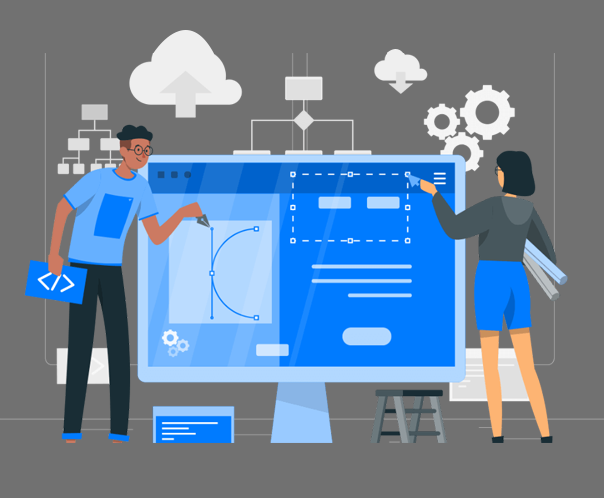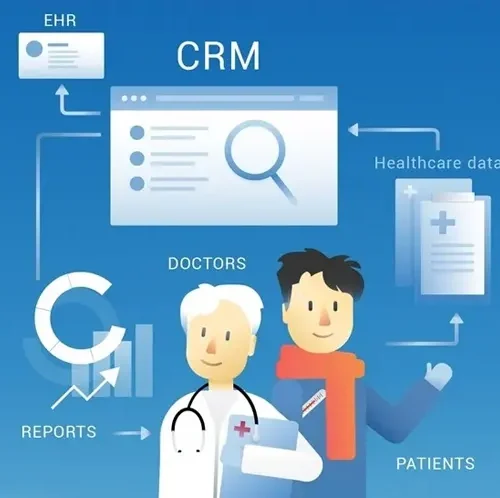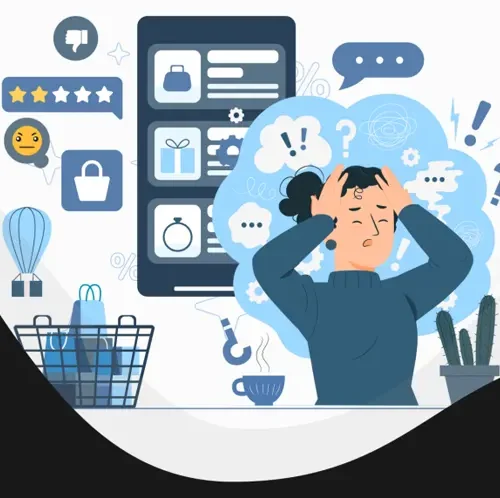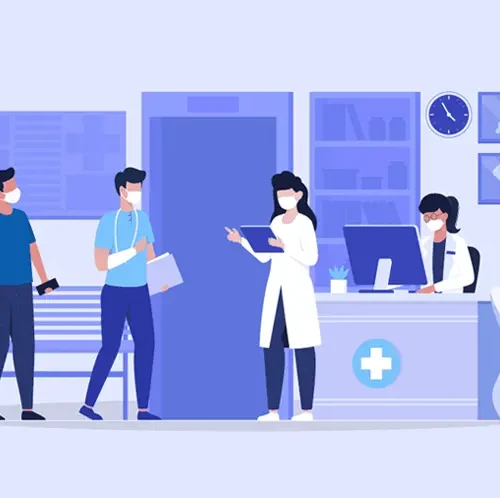Good Website design can constantly seem a part of alchemy, exclusively for the inexperienced. Moreover, learners can usually notice what makes a Best Web Design, unifying the relevant elixir programming language from scratch infrequently founds.
The Best Web designers exertion over sparkling stars, and complex coding syntax, whereas good website design examples depict ever-tedious interactions between RGB colors and Hex color codes, they all assimilate to discover the magical solution that drives the ultimate equity between innovation, trendy, creativity, and business intrepidity.
Only the combining of skills, knowledge, and experience to create the best Web Design solutions for your business. Good website design examples refer to a lifetime of pride and treasure hunt for business liquidity, while failure subjects to low conversions, poor ROI, and less interactivity, which drives business frustration and temporary Illiquidity.
Here are a few questions that we should figure out here:
- What is the highly significant element in website design?
- What makes a good website design?
- How does a good web design influence business operations?
- How a website is perceived by the visitor is just as important as how it is perceived by its creator.
When designing a website, many key factors will contribute to how it is perceived.
A website that is not user-friendly can cause a bad impression. Therefore, a good website design should consider everything from the content, presentation, and navigation of your site. Now the question is; what makes a good website design? Here are several factors that influence a successful Web Design scenario, such as flexibility, color combinations, typography selections, graphic designs, simplicity, and functionality, which lead to good website design examples.
Good website design examples illustrate business websites that can help boost confidence and influence audiences to take action. Building a great user experience contains your website that should be optimized properly to build usability, a perfect mix of aesthetics and functionality.
Being a Best Web Designer is more than just building an awesome website. The secret to success is understanding the market, being creative, and using good design practices.
In this article, we’ve outlined 6 small but important things to observe in building a perfect web design tips to help you get started with designing a functional, user-centric, and result-driven website.
6 Small But Important Elements of Web Design:
If you’re in the market for a new website design, you’ve probably heard that it’s a complicated process. There are so many elements to consider, and it can seem like a magical process of transformation, creation, and combination.
But there’s one thing most people don’t think about: how your site’s design affects the performance of your SEO. If you want to make sure your business is seen by as many people as possible on search engines like Google, the design of your site should be 100% optimized for search engine optimization (SEO).
Creating a beautiful website design is like creating a beautiful dream into chromatic designs.
Just like cooking, the process of creating a website design can feel a little magical. You start with an idea, and it turns into something that looks amazing — but it’s not quite what you imagined. You think about what you want your site to do for your business, but then you realize that even though the site looks good, it doesn’t really serve your purpose.
And then it hits you: This isn’t working out so well! How can I make this better? What kind of products will you sell? How will you market them? How much money do you need to start? And, most importantly, what does your website look like?
While the answers to these questions could change over time, there are some key elements of your website that shouldn’t be overlooked. These include:
1. Optimize Graphics designs to boost Page Load Times:
The importance of web graphics can’t be underestimated. Your visitors expect to be able to load your site quickly, and if they don’t, you lose their attention and trust.
The good news is that optimizing your web graphics for better page load times is as simple as changing the format you used in your website design. Learn which formats are best for your images, and what can make a difference in how fast they load.
Well, if an image takes too long to load (and it will if it’s not optimized), people will lose interest very quickly. So what can you do?
Small files take up less space on the server and can be loaded faster, but large files take up more space on the server and take longer to load because they have more information in them.
The first thing we recommend is using PNG files. These are a good option because they don’t use any colors at all, so they’re easy on bandwidth; they’re also smaller than JPGs/GIFs, which makes them ideal for mobile devices.
If you’re going for a specific effect (e.g., watercolor effects), then try using a GIF instead of an image because GIFs are transparent and therefore won’t take up as much space on your page as an image would—and because they’re so small!
2. Choosing Color Scheme:
Color is a big deal, and you’re going to have to make decisions about it.
When you’re designing a website, the first thing to do is choose your color palette. Your color palette and fonts will directly inform your visitors’ opinions of your site and are what most novice designers start with.
You know that colors are important—and you shouldn’t settle for anything less than stellar-looking. But;
- How do you choose the right colors?
- What if your colors don’t match what your readers expect?
- How do you make sure that all of your website’s colors are consistent and harmonious?
- What color is the best fit as per gender deviations or age differences?
- Is it necessary to use the color of my website as per the target audience’s demographic patterns?
Trust us, the preparation you’ve done so far on our website will give you the best example. While preferring a color scheme, being heedful to your brand voice or industry viewpoints — Similarly, thoroughly scrutinize your target audience’s demographic patterns and preferences.
Parents of newborns will love soft pinks and sky blues, and yellow colors, while K-6 children prefer vivid colors. Teens and young adults, by nature, are lively, while mature people prefer sophisticated colors. Once you understand color psychology, choosing your website color becomes easier. We here give one pic below in this blog post to explore color choices more in-depth, so that can help!

3. Right Selection of Typography Or Font use in web designing:
Do you wish to have your customers with a positive impression? Then you need to design your website with typography.
Typography is a huge part of any website design. You can make or break your site just by choosing the right fonts for your messaging.
When it comes to typefaces, there are often 5 types we have predominantly chosen: serif typefaces, sans-serif typefaces, script typefaces, monospaced typefaces, and display typefaces. Serifs add more weight to the letters, making them appear smoother and sans-serif typefaces are often used for body copy. Whereas, script and display typefaces are mostly used for headlines.
You don’t have to use fancy fonts for every site, but you do need to pick one that is clear, easy to read, and will help convey your message. Even if your audience isn’t technically literate, they’ll want to be able to understand what you’re trying to say.
In addition, you want your font choice to integrate your site’s overall design and layout — if your header text has a light background color, then use a dark font!
4. Keep it user-friendly:
User-friendly site architecture is an important thing in Web Design. good website design examples have many things you can do to make your website look good and be user-friendly. But what about the usability of your site?
A good web design is clean, simple, and easy to use. You want your users to be able to interact with the site easily—even if they’re not tech-savvy—so they can find all the information they need without struggling.
You may ask yourself before designing a website; such as
- Does the design really match my business goals?
- What does this design element present and how does this element help my users?
- If I withdraw this element suddenly, will it intrigue my audience?
- How does this element depict and justify my business purpose?
You have a great idea for an interface design, but it’s not clear to other people what it is or how it works. It could be that the design isn’t exactly what anyone else is looking for, or even worse, you don’t know what the design is supposed to do.
You must ensure that the web design is easily accessible and suited to your users. Audiences are more addicted to simple interaction styles, site features, and web interfaces. Be innovative but also keep it user-friendly!
5. Navigation is an Important Aspect in Web Design:
Navigating a website is like navigating the world. You need to know where you are going, how to get there, and how best to get there. The same holds for navigating a website.
There are three main types of navigation: ‘Structural’, ‘Associative’, and ‘Utility’.
- Structural navigation is designed to connect one page to a different page for the hinge on the site;
- Associative navigation can connect pages with related subjects and content, without considering their location on the same site; put links across structural boundaries,
- And Utility navigation can connect pages and elements that help individuals use the site itself.
In common sense, good website design examples drive site navigation for a user-centric experience. The arrangement, style, automation, purpose, and web accessibility are the most important aspects you need to deal with when planning for the navigation design.
And while we’re at it, don’t lose track of extremely animated hover designs or complex Subnav designs, themes, and templates! Navigational aspects —which can occur in a site’s header, body, and footer sections—simply put your visitors towards their highly-visible areas.
6. Mobile-friendly is a crucial aspect of modern website development projects:
Finally! We’re nearly at the end of this journey, and we’re ready to show you what a sleek, compact, user-friendly website looks like.
The volume of mobile web traffic beat desktop traffic during the second quarter of 2022, smartphones generated 58.99% of global web traffic and offer no signs to ignore at all.
Mobile-friendly websites aren’t just pleasant, offer a sharp edge among the audience and better conversion rates. So it has now become a more fundamental aspect of web designing concepts.
A responsive website template that is suitable for different screen sizes or an interactively mobile-friendly design is on the demand for non-desktop users who want to visit your site.
Most WordPress themes or templates are now available for web designers, all are equipped with mobile-friendly designs. If you’re hiring the Best Website Design Company in India, we will cover you up with designing the most user-friendly, mobile-friendly, lead-nurturing best web design solutions that come in light with sales-driven, traffic-driven web design solutions.
Now that you’ve learned about the key elements of web design, it’s time for HOW TO Find Us!
Maven Technology is the best WordPress and Full-Stack website development company in India. We’re a team of expert PHP developers dedicated to building the website that you need, without the hassle.
First off, we start with a meeting to discuss your ideas and goals for your new website. Then we’ll gather your existing logo and key branding data to establish your website design that interacts with your brand. If you’re looking for a custom WordPress site that’s 100% unique, mobile-friendly, monetizing machine, user-centric, and properly intriguing to your brand, look at our Custom Website Design service. We are recognized as the Best Web Design Company in India with years of experience in providing industry-leading web design solutions at an affordable price.
Build a customized WordPress or Full-stack website with us, and be an experience the fastest time to launch. Our team of WordPress and Full-stack designers builds custom websites that tell your brand story, attract customers and grow your business.
Your completed website design will be SEO-friendly, mobile-friendly, fast-loaded, user-centric, and lead-generating machine. Additional features you may expect — custom blog writing service, contact forms, CTA, weekly/monthly Google analytic reports, SMM service, and e-commerce functionality.
If you’re ready to onboard with our Best Web Design, you need to register for our Custom Website Design service today!




